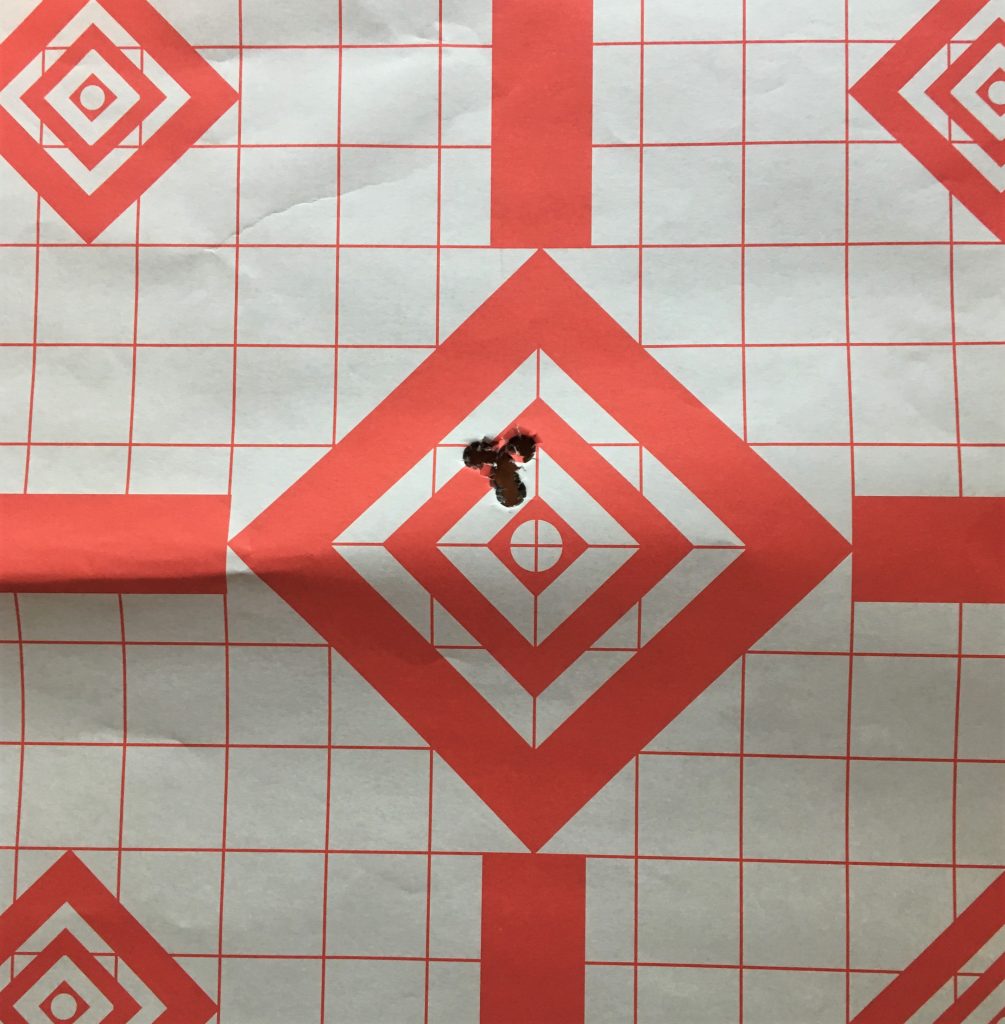The debate for three- or five-shot groups while sighting a rifle is a tale as old as time.
The Debate For Three- or Five-Shot Groups. A tale as old as time, shooters have long debated how many shots are needed to adequately sight in a rifle. While valid arguments can be made for any group size, shooters most commonly land on three or five. In this blog, we break down each side of the debate.
The Case for Three-Shot Groups
In most hunting scenarios, you ideally only need one shot. And the target area on a game animal, especially the majority of North America’s big game, is often larger than a paper plate. A three-shot group could be adequate for shooters who don’t need ultimate precision.
Furthermore, range-time is precious. Shooters wishing to sight in multiple rifles in a session may be better served shooting three-shot groups. Ammunition costs are also greatly reduced when fewer shots are taken, especially with performance rounds or larger caliber loads that are considerably more expensive.
For those shooting larger caliber rifles or follow-up shots in faster succession, a barrel can overheat in a hurry, and three-shot groups can help stretch your barrel’s window during a range session. Enough heat can greatly alter a bullet’s path and produce inaccurate and inconsistent results. Shooters should “learn their rifle” and know how many shots their barrel can take without throwing rounds. Heavier barrels can withstand more heat without altering shot placement. It’s important to lightly touch your rifle barrel to know if it’s getting hot, especially on days when the outside air temperature is higher, but a barrel won’t heat as much with fewer shots.
A three-shot group may also be ideal for gun owners who are testing different loads. A rifle doesn’t always love every round that’s fed into the chamber. Some prefer heavier loads, while some prefer faster loads. It’s important to identify the rounds that produce the best results for your rifle, and three-shot groups may save valuable time and resources when experimenting.
The Case for Five-Shot Groups
If you’re wanting to fine-tune a rifle, you may be better-served shooting five-shot groups. A good strategy is to shoot five shots and throw out the one furthest from the center of the group. Then use a pen to draw an outline around the remaining shots and assume the middle of those remaining holes is your zero. After letting your barrel cool, adjust your scope and repeat the process to see if your groups improve.
Higher shot volume is also a great way to test the ability of a shooter and his rifle. Shooting more may allow you to identify a tendency to pull shots. Or it could give you more flexibility to focus on shooting mechanics instead of the exact shot placement. Greater volume equals greater consistency.
Long-range shooters may especially benefit from five-shot groups, while some may even prefer more shots in a grouping. Over distance, millimeters turn to centimeters and then to meters, and long-range marksmen will see more variance in their shots. More shots may be needed to find a rifle’s true zero.
Shooting more will also give a long-range shooter more consistency when firing in different weather conditions. While wind and humidity can be consistent, more often than not, weather conditions change over a session at the range. Even slightly gusting winds can alter a bullet’s path at longer distances. More volume can help determine a better average despite Mother Nature.
[caption id="attachment_1268" align="aligncenter" width="676"] The Debate For Three- or Five-Shot Groups.[/caption]
The Debate For Three- or Five-Shot Groups.[/caption]
Handloaders also benefit from higher-quantity groupings. To match a load with your rifle’s sweet spot, consider the ladder method. Use the same bullet for all five loads, but vary the grains of powder in each load. Bullet holes will concentrate from certain powder weightings and produce inconsistent results at others. Notate the powder weights that produce consistent results. This can be done more effectively with higher-quantity groups.
Shooters that prefer larger group numbers would argue that a three-shot group doesn’t provide enough sample size to provide accurate results. Those that lean towards lower-quantity groupings would argue that if your gun is inconsistent with three, the source of the problem might lie outside of the shot itself. Erratic groups should lead a shooter towards other possible solutions, such as practicing trigger mechanics or double checking the scope’s mount.
Knowing how many shots to shoot really depends on your goals and your primary need. Some shooters may benefit from their groups being “close enough.” Others seek to truly perfect their craft. Whether you shoot three- or five-shot groups, consistency is the goal. No matter the case, arguments can be made on both sides. Most importantly keep shooting, and share the sport with those around you.
[caption id="attachment_1262" align="aligncenter" width="970"] The Debate For Three- or Five-Shot Groups[/caption]
The Debate For Three- or Five-Shot Groups[/caption]
